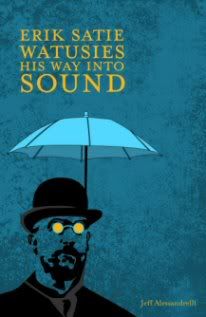Please read and follow the the below guidelines for your Final Portfolios carefully, as deviations from this formatting could cause you to lose points. If you have any questions regarding what is expected of you, or how your material should be assembled, please do not hesitate to email me:
1) All material should be place in a pocketed folder; no binders, plastic sleeves, or loose pages. Make sure your name is clearly identifiable on the front of the folder.
2) All five, individual poems, their critical introductions, and their subsequent revision hisitories should be stapled in separate packets. Each packet should be order in the following manner: a) a one-paragraph introduction that outlines not just what or how you revised throughout the various drafts, but, most importantly, why you made particular revisions (While I don't expect you to quote Kinzie, directly, your decisions should be predicated upon concepts and ideas we've read in The Poet's Guide to Poetry. Just justifications should be clearly stated.); b) the final draft of your poem; c) at least two intermediate drafts; d) your prose meditation that you used to initiate the writing process.
3) One of your five poems must be the poem we worked on in your conference. For your conference poem, you must included, in addition to the material stated in the above guideline, any notes you or I wrote during our conference session. These notes should be stapled with the other material at the bottom of the packet.
4) One of your five poems must be the poem we work-shopped in class. For your work-shop poem, you must included, in addition to the material stated in the above guideline, the comments made by your peers and myself about your poems. These comments should be stapled with the other material at the bottom of the packet; if, for some reason, your peer did not write any comments on your poem (or wrote very few comments that happened not to be relevant), do not include these in the packet.
5) Final Portfolios will be due at the beginning of class on Monday, December 5th. Those students whose poems will be work-shopped during our final class session will need to drop their Final Portfolios in my campus mailbox by 2:00PM on Wednesday, December 7th.
1) All material should be place in a pocketed folder; no binders, plastic sleeves, or loose pages. Make sure your name is clearly identifiable on the front of the folder.
2) All five, individual poems, their critical introductions, and their subsequent revision hisitories should be stapled in separate packets. Each packet should be order in the following manner: a) a one-paragraph introduction that outlines not just what or how you revised throughout the various drafts, but, most importantly, why you made particular revisions (While I don't expect you to quote Kinzie, directly, your decisions should be predicated upon concepts and ideas we've read in The Poet's Guide to Poetry. Just justifications should be clearly stated.); b) the final draft of your poem; c) at least two intermediate drafts; d) your prose meditation that you used to initiate the writing process.
3) One of your five poems must be the poem we worked on in your conference. For your conference poem, you must included, in addition to the material stated in the above guideline, any notes you or I wrote during our conference session. These notes should be stapled with the other material at the bottom of the packet.
4) One of your five poems must be the poem we work-shopped in class. For your work-shop poem, you must included, in addition to the material stated in the above guideline, the comments made by your peers and myself about your poems. These comments should be stapled with the other material at the bottom of the packet; if, for some reason, your peer did not write any comments on your poem (or wrote very few comments that happened not to be relevant), do not include these in the packet.
5) Final Portfolios will be due at the beginning of class on Monday, December 5th. Those students whose poems will be work-shopped during our final class session will need to drop their Final Portfolios in my campus mailbox by 2:00PM on Wednesday, December 7th.
